- 29a Bùi Xuân Phái, P.Tây Thạnh, Quận Tân Phú, TPHCM
- linhkienduchuy2018@gmail.com
- 0942954739
- Trang chủ
- TẤT CẢ SẢN PHẨM
- HMC5883L GY-273 Cảm biến la bàn số
Khác
HMC5883L GY-273 Cảm biến la bàn số (từ kế)
Mã sản phẩm: Chưa rõDịch vụ & Khuyến mãi
Giao miễn phí trong nội thành TPHCM đối với đơn hàng trên 1 triệu đồng
Tặng ngay 50.000đ cho đơn hàng trên 2 triệu đồng
Chi tiết sản phẩm
+ Cảm biến la bàn số HMC5883L có kích thước nhỏ gọn sử dụng giao tiếp I2C, được dùng để đo từ trường của trái đất nhằm xác định phương hướng với độ chính xác lên đến 1 hoặc 2 độ, cảm biến có cách đo riêng biệt cho từng trục và có thể kết hợp lại để tính toán 3D.
+ Cảm biến la bàn số HMC5883L còn có thể dùng để đo từ trường thô hoặc các nguồn từ trường mạnh hơn gần nó, cảm biến có thể cảm nhận được nguồn từ trường xung quanh nó như của nam châm hoặc điện trường, khi phát hiện được từ trường từ bên ngoài, nó có thể xác định được khoảng cách tương đối hoặc chiều đến vật phát ra từ trường đó.
THÔNG SỐ KỸ THUẬT:
+ Điện áp hoạt động: 5V
+ Độ phân giải: 2mm gauss ở từ trường ±8g
+ Giao tiếp: I2C 160Hz ở chế độ fast
+ Độ chính xác: 1º - 2º
+ Xử lý dữ liệu bộ ADC 12 bit, xử lý chống nhiễu tốt.
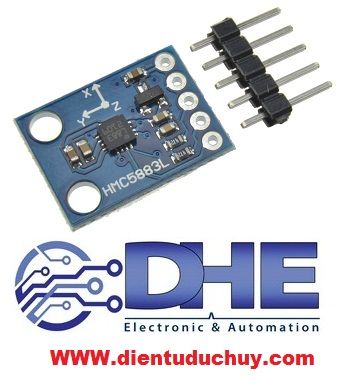
SƠ ĐỒ ĐẤU NỐI HMC5883L VÀ ARDUINO:
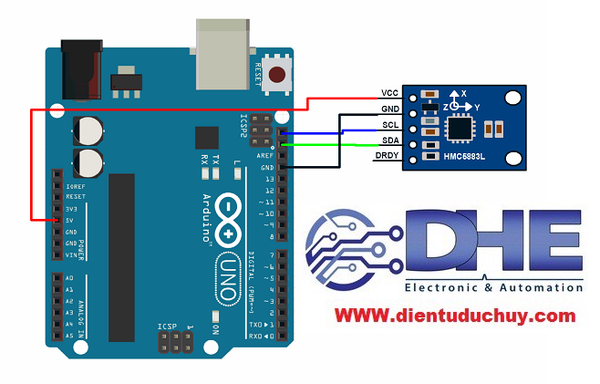
CÀI ĐẶT THƯ VIỆN CHO ARDUINO: Hãy liên hệ với chúng tôi để được cung cấp thư viện.
THAM KHẢO CODE ARDUINO GIAO TIẾP HMC5883L:
#include <Wire.h>
#include <Adafruit_Sensor.h>
#include <Adafruit_HMC5883_U.h>
/* Assign a unique ID to this sensor at the same time */
Adafruit_HMC5883_Unified mag = Adafruit_HMC5883_Unified(12345);
void displaySensorDetails(void)
{
sensor_t sensor;
mag.getSensor(&sensor);
Serial.println("------------------------------------");
Serial.print ("Sensor: "); Serial.println(sensor.name);
Serial.print ("Driver Ver: "); Serial.println(sensor.version);
Serial.print ("Unique ID: "); Serial.println(sensor.sensor_id);
Serial.print ("Max Value: "); Serial.print(sensor.max_value); Serial.println(" uT");
Serial.print ("Min Value: "); Serial.print(sensor.min_value); Serial.println(" uT");
Serial.print ("Resolution: "); Serial.print(sensor.resolution); Serial.println(" uT");
Serial.println("------------------------------------");
Serial.println("");
delay(500);
}
void setup(void)
{
Serial.begin(9600);
Serial.println("HMC5883 Magnetometer Test"); Serial.println("");
/* Initialise the sensor */
if(!mag.begin())
{
/* There was a problem detecting the HMC5883 ... check your connections */
Serial.println("Ooops, no HMC5883 detected ... Check your wiring!");
while(1);
}
/* Display some basic information on this sensor */
displaySensorDetails();
}
void loop(void)
{
/* Get a new sensor event */
sensors_event_t event;
mag.getEvent(&event);
/* Display the results (magnetic vector values are in micro-Tesla (uT)) */
Serial.print("X: "); Serial.print(event.magnetic.x); Serial.print(" ");
Serial.print("Y: "); Serial.print(event.magnetic.y); Serial.print(" ");
Serial.print("Z: "); Serial.print(event.magnetic.z); Serial.print(" ");Serial.println("uT");
// Hold the module so that Z is pointing 'up' and you can measure the heading with x&y
// Calculate heading when the magnetometer is level, then correct for signs of axis.
float heading = atan2(event.magnetic.y, event.magnetic.x);
// Once you have your heading, you must then add your 'Declination Angle', which is the 'Error' of the magnetic field in your location.
// Find yours here: http://www.magnetic-declination.com/
// Mine is: -13* 2' W, which is ~13 Degrees, or (which we need) 0.22 radians
// If you cannot find your Declination, comment out these two lines, your compass will be slightly off.
float declinationAngle = 0.22;
heading += declinationAngle;
// Correct for when signs are reversed.
if(heading < 0)
heading += 2*PI;
// Check for wrap due to addition of declination.
if(heading > 2*PI)
heading -= 2*PI;
// Convert radians to degrees for readability.
float headingDegrees = heading * 180/M_PI;
Serial.print("Heading (degrees): "); Serial.println(headingDegrees);
delay(500);
}
Sản phẩm bạn quan tâm
1 GÓI (10 CON) DIODE CHỈNH LƯU 1N4007, 1A 1000V, KIỂU CHÂN CẮM DO-41
3,000₫
- Mã sản phẩm: chưa rõ
- Thương hiệu: Khác
- Mô tả ngắn:
1 PIN LITHIUM 3V CR2032
5,000₫
- Mã sản phẩm: chưa rõ
- Thương hiệu: Khác
- Mô tả ngắn: + Sản phẩm được sử dụng rộng rãi trong ngành công nghiệp điện tử công nghệ cao, cân điện tử, công nghiệp đồ chơi trẻ em, máy tính bỏ túi, máy ảnh, dụng cụ radio và các thiết bị phát âm thanh flash khác nhau.
1 PIN SẠC 18650 PANASONIC CHÍNH HÃNG CHẤT LƯỢNG CAO - DUNG LƯỢNG 100% 3400MAH - ĐIỆN ÁP 3.7V
180,000₫
- Mã sản phẩm: chưa rõ
- Thương hiệu: Khác
- Mô tả ngắn: - Pin Panasonic 18650 lithium không được ghi nhãn hiệu và thông tin dung lượng trên vỏ ngoài của pin, model tương ứng của Panasonic 3400mah là NCR18650B, mong đại đa số người mua biết! - Chất liệu pin: Pin Li-ion (Li-ion, Lithium Ion Battery).- Thương hiệu pin: Panasonic chính hãng- Mẫu pin: 18650.- Thông số kỹ thuật pin: 18 * 65 (mm).- Dung lượng pin: 3400MAH- Nội trở: dưới 45 miliohm.- Số lần sạc và xả: hơn 1000 lần.- Dòng xả tối đa: 10A, dòng xả liên tục: 5A- Điện áp pin: điện áp tiêu chuẩn 3,6-3,7V; điện áp sau khi sạc đầy là 4,2V.- Công dụng chính: Loại pin này chủ yếu được sử dụng để thay thế pin máy tính xách tay, đèn pin cao cấp, cung cấp năng lượng dự phòng cho thiết bị di động và cũng có thể được sử dụng như nhiều loại...
1 PIN SẠC 18650 PANASONIC ĐẦU LỒI NHẬP KHẨU CHẤT LƯỢNG CAO - DUNG LƯỢNG 100% ĐỦ 3400maH - 3.7V - DÒNG XẢ LIÊN TỤC 5A
95,000₫
- Mã sản phẩm: chưa rõ
- Thương hiệu: Khác
- Mô tả ngắn: - Pin Panasonic 18650 lithium không được ghi nhãn hiệu và thông tin dung lượng trên vỏ ngoài của pin, model tương ứng của Panasonic 3400mah là NCR18650B, mong đại đa số người mua biết! - Chất liệu pin: Pin Li-ion (Li-ion, Lithium Ion Battery).- Thương hiệu pin: Panasonic nhập khẩu- Mẫu pin: 18650.- Thông số kỹ thuật pin: 18 * 65 (mm).- Dung lượng pin: 3400MAH- Nội trở: dưới 45 miliohm.- Số lần sạc và xả: hơn 1000 lần.- Dòng xả tối đa: 10A, dòng xả liên tục: 5A- Điện áp pin: điện áp tiêu chuẩn 3,6-3,7V; điện áp sau khi sạc đầy là 4,2V.- Công dụng chính: Loại pin này chủ yếu được sử dụng để thay thế pin máy tính xách tay, đèn pin cao cấp, cung cấp năng lượng dự phòng cho thiết bị di động và cũng có thể được sử dụng như nhiều loại...
12F629 - DIP8 - Vi điều khiển 8bit MICROCHIP
40,000₫
- Mã sản phẩm: chưa rõ
- Thương hiệu: Khác
- Mô tả ngắn: Thông số kỹ thuật:+ Là vi điều khiển 8bit với bộ nhớ Flash dựa trên công nghệ CMOS, cho giá thành rẻ, tiết kiệm chiphí nhưng vẫn đảm độ tối ưu hóa cao trong khi vẫn tiêu thụ điện năng thấp.+ Điện áp hoạt động: 2 - 5.5V.+ Tốc độ tối đa: 20MHz , 200ns cho 1 chu kỳ lệnh.+ Có chế độ SLEEP tiết kiệm điện năng.+ Có bộ watchdog timer. + 6 I/O lập trình Input/Ouput.+ 4 kênh ADC 10bit.+ 1 timer 8bit, 1 timer 16bit
2SC1943/2SC5200 - Cặp Transistor công suất NPN/PNP
15,000₫
- Mã sản phẩm: chưa rõ
- Thương hiệu: Khác
- Mô tả ngắn: Đang cập nhật
2W10 - DIODE CẦU CHỈNH LƯU TRÒN, ĐIỆN ÁP TỐI ĐA 1000V, DÒNG ĐIỆN TỐI ĐA 2A
2,000₫
- Mã sản phẩm: chưa rõ
- Thương hiệu: Khác
- Mô tả ngắn: THÔNG SỐ KỸ THUẬT:+ Điện áp chịu đựng tối đa: 1000v.+ Dòng điện chịu đựng tối đa: 2A.+ Kiểu chân tròn.+ Nhiệt độ hoạt động: -55 - 150 độ C. MÔ TẢ CÁC CHÂN: - 2 Chân giữa là 2 chân cấp nguồn AC đầu vào cần chỉnh lưu. - Chân (+) là chân ra DC+. - Chân (-) là chân ra DC-.
74HC245N (IC đệm dữ liệu 2 chiều, khóa trạng thái Output)
6,000₫
- Mã sản phẩm: chưa rõ
- Thương hiệu: Khác
- Mô tả ngắn: Đang cập nhật
74HC573 ( chốt dữ liệu đầu ra)
6,000₫
- Mã sản phẩm: chưa rõ
- Thương hiệu: Khác
- Mô tả ngắn: Đang cập nhật
74HC574 (chốt dữ liệu theo sườn xung cạnh lên)
7,000₫
- Mã sản phẩm: chưa rõ
- Thương hiệu: Khác
- Mô tả ngắn: Đang cập nhật
74LS283 (IC cộng binary 4bit)
13,000₫
- Mã sản phẩm: chưa rõ
- Thương hiệu: Khác
- Mô tả ngắn: Đang cập nhật
A4988 Driver động cơ bước
25,000₫
- Mã sản phẩm: chưa rõ
- Thương hiệu: Khác
- Mô tả ngắn: Công Dụng Sản Phẩm:- Module A4988 là driver điều khiển động cơ bước cực kì nhỏ.- Hỗ trợ nhiều chế độ làm việc.- Điều chỉnh được dòng ra cho động cơ.- Tự động ngắt điện khí quá nóng.Thông Số Kỹ Thuật:- Điện áp hoạt động 3,3v - 5v- Điện áp điều khiển (VMOT) 8v - 35v- 5 chế độ điều khiển động cơ bước: full, 1/2, 1/4, 1/8, 1/16- Kích thước 15(W) x 20(L) x 2(H)
ACS712 -20 Ampe Cảm biến dòng điện AC/DC - Analog
45,000₫
- Mã sản phẩm: chưa rõ
- Thương hiệu: Khác
- Mô tả ngắn: Cảm biến dòng điện ACS712 (Hall Effect Current Sensor) dựa trên hiệu ứng Hall để đo dòng điện AC/DC, cảm biến có kích thước nhỏ gọn, dễ kết nối, giá trị trả ra là điện áp Analog tuyến tính theo cường độ dòng điện cần đo nên rất dễ kết nối và lập trình với Vi điều khiển, thích hợp với các ứng dụng cần đo dòng AC/DC với độ chính xác cao.Cách sử dụng:1) Đo dòng điện DC:Khi đo DC phải mắc tải nối tiếp Ip+ và Ip- đúng chiều, khi dòng điện đi từ Ip+ đến Ip- Vout sẽ ra mức điện áp tương ứng 2.5~5VDC tương ứng dòng 0~Max, nếu mắc ngược Vout sẽ ra điện thế 2.5~0VDC tương ứng với 0~(-Max).Khi cấp nguồn 5VDC cho module khi chưa có dòng Ip (chưa có tải mắc nối tiếp) thì Vout = 2.5VDC, khi dòng Ip( dòng của tải) bằng Max thì...
AD16 - 22SM, CÒI BÁO ĐỘNG PHI 22MM, ĐIỆN ÁP 220VAC/DC
25,000₫
- Mã sản phẩm: chưa rõ
- Thương hiệu: Khác
- Mô tả ngắn:
AD16-22SM - CÒI BÁO ĐỘNG PHI 22MM, ĐIỆN ÁP 24VAC/DC (CÓ THỂ SỬ DỤNG AC HOẶC DC)
25,000₫
- Mã sản phẩm: chưa rõ
- Thương hiệu: Khác
- Mô tả ngắn:
AD8232 Mạch cảm biến nhịp tim
170,000₫
- Mã sản phẩm: chưa rõ
- Thương hiệu: Khác
- Mô tả ngắn: Thông số kỹ thuật: Đang cập nhật
ADAPTER NGUỒN XUNG 12V - 5A
90,000₫
- Mã sản phẩm: chưa rõ
- Thương hiệu: Khác
- Mô tả ngắn: Thông số kỹ thuật:+ Điện áp ngõ vào:100~240VAC, 50/60Hz.+ Điện áp ngõ ra: Khách hàng có thể tuỳ chọn loại 5V/12VDC/24VDC+ Dòng điện ngõ ra tối đa: 1A hoặc 2A hoặc 5A (nếu sử dụng liên tục nên cung cấp ở mức 80% công suất).+ Kiểu nguồn: nguồn xung.+ Kiểu giắc ngõ ra: Chuẩn Jack DC tròn đường kính ngoài 5.5mm, đường kính trong phù hợp với lỗ kim từ 2.1~2.5mm.
ADAPtOR NGUỒN ĐIỀU CHỈNH ĐIỆN ÁP 3 - 24V/2A (CÓ HIỂN THỊ ĐIỆN ÁP)
150,000₫
- Mã sản phẩm: chưa rõ
- Thương hiệu: Khác
- Mô tả ngắn: MÔ TẢ SẢN PHẨM:- Bộ nguồn Adapter Điều Chỉnh Điện Áp 1-24V 100-2000mA có thiết kế nhỏ gọn, chắc chắn. - Là bộ chuyển đổi nguồn từ 220V AC về 1-24V DC, thường được sử dụng để cấp nguồn, test sản phẩm: Motor, board mạch điện,....với khả năng cấp dòng đầu ra tối đa lên đến 2A 48W. - Biến trở chỉnh áp linh hoạt từ 1 ~ 24V DC, cấp nguồn cho vô số các ứng dụng khác nhau như: + Làm bộ nguồn thí nghiệm đa năng có hiển thị điện áp + Làm nguồn cho Màn Hình LCD, thiết bị giám sát, thiết bị sạc, MP3/MP4...THÔNG SỐ KỸ THUẬT: - Điện áp đầu vào: 100V - 240V AC - Tần số: 50 / 60 Hz - Điện áp đầu ra: 1V ~ 24V - Dòng đầu ra: 100mA - 2000mA - Công suất đầu ra tối đa: 48W - Đầu jack DC: 5.5 * 2.5 mm (tương...
ADAPTOR NGUỒN XUNG 9V - 2A
40,000₫
45,000₫
- Mã sản phẩm: chưa rõ
- Thương hiệu: Khác
- Mô tả ngắn: Thông số kỹ thuật:Điện áp ngõ vào:100~240VAC, 50/60Hz.Điện áp ngõ ra: 9VDCDòng điện ngõ ra tối đa: 2A (nếu sử dụng liên tục nên cung cấp ở mức 80% công suất).Kiểu nguồn: nguồn xung.Kiểu giắc ngõ ra: Chuẩn Jack DC tròn đường kính ngoài 5.5mm, đường kính trong phù hợp với lỗ kim từ 2.1~2.5mm.
ADC0804 - Chuyển đổi Analog Digital 4bit
40,000₫
- Mã sản phẩm: chưa rõ
- Thương hiệu: Khác
- Mô tả ngắn: Tham khảo tài liệu datasheet: http://www.ti.com/lit/ds/snosbi1c/snosbi1c.pdf
ADC0809 Chuyển đổi Analog sang Digital - 8bit
40,000₫
- Mã sản phẩm: ADC0809
- Thương hiệu: Khác
- Mô tả ngắn: Tham khảo thêm tài liệu datasheet:http://www.ti.com/lit/ds/symlink/adc0808-n.pdf
ADC0809CCN CHUYỂN ĐỔI ANALOG SANG DIGITAL 8BIT - CHẤT LƯỢNG TỐT - DIP28
40,000₫
- Mã sản phẩm: chưa rõ
- Thương hiệu: Khác
- Mô tả ngắn: ADC0809CCN là một thiết bị CMOS tích hợp với một bộ chuyển đổi từ tương tự sang số 8 bit, bộ chuyển đổi này dùng phương pháp chuyển đổi xấp xỉ, có thể truy xuất bất kỳ kênh nào trong các ngõ vào tương tự một cách độc lập.THÔNG SỐ KỸ THUẬT:8 kênh đầu vào, bộ chuyển đổi A/D 8 bit, tức là độ phân giải là 8 bit.Thời gian chuyển đổi là 100μs (khi đồng hồ là 640kHz), 130μs (khi đồng hồ là 500kHz)Điện áp cung cấp: 5VDCPhạm vi điện áp đầu vào analog là 0 ~ + 5VPhạm vi nhiệt độ hoạt động -40 đến +85 độ CTiêu thụ điện năng thấp, khoảng 15mW
ADXL335 GY-61 Cảm biến gia tốc 3 trục - đầu ra tín hiệu Analog trên 3 trục X,Y,Z
150,000₫
- Mã sản phẩm: chưa rõ
- Thương hiệu: Khác
- Mô tả ngắn: Cảm Biến GY-61 Analog Accelerometer ADXL335 được sử dụng để đo gia tốc hướng (Accelerometer) hoặc độ rung động (tilt) theo 3 trục x, y, z và trả ra giá trị điện áp Analog tương ứng trên 3 chân của cảm biến nên có thể dễ dàng quan sát bằng máy đo hoặc đọc bằng các chân Analog của Vi điều khiển.THÔNG SỐ KỸ THUẬT:Chip cảm biến: ADXL335 Điện áp : 3V ~ 5V Dòng điện : 400uA Giao tiếp : đầu ra Analog trên 3 trục x,y,z Full scale range : +/-3gNhiệt độ hoạt động : -40'C~ +85'CĐộ nhạy: 300mV/gĐộ chính xác: ±10%Phù hợp khi kết nối với các hệ thống 5V hoặc 3.3VĐiện áp đầu ra analog ở mức giữa: 1.65VSƠ ĐỒ KẾT NỐI ARDUINO VỚI MẠCH ADXL335:CODE THAM KHẢO ARDUINO GIAO TIẾP VỚI ADXL335:const int xInput = A0; const int yInput = A1; const int zInput = A2; // initialize minimum and maximum Raw...
ADXL345 GY - 291 Cảm biến gia tốc 3 trục xyz
40,000₫
- Mã sản phẩm: chưa rõ
- Thương hiệu: Khác
- Mô tả ngắn: Cảm Biến Accelerometer 3 Trục ADXL345 được sử dụng để đo gia tốc hướng (Accelerometer) hoặc độ rung động (tilt) theo 3 trục x, y, z, cảm biến dễ sử dụng với giao tiếp I2C và rất nhiều code mẫu hỗ trợ.Thông số kỹ thuật:Nguồn sử dụng: 3~5VDCDòng sử dụng: 30uAĐiện áp giao tiếp: 3~5VDCChuẩn giao tiếp I2C / SPIMeasuring Ranging: ±2g±16g 43-axis, ±2g/±4g/±8g/±16gCompact Accelemotor/InclinometerLow Power Consumption
Ampe kẹp đo dòng điện kỹ thuật số 600Ampe DC/AC - BM2566
400,000₫
- Mã sản phẩm: chưa rõ
- Thương hiệu: Khác
- Mô tả ngắn: BM5266 này là một máy đo kẹp kỹ thuật số cầm tay, độ tin cậy cao, độ chính xác cao và tính di động, một công cụ hoàn hảo cho phòng thí nghiệm, nhà máy, gia đình và các lĩnh vực khác.Chức năng:1. Màn hình hiển thị đa chức năng: - Giá trị tối đa 1999, - Hiển thị giá trị volt AC,DC - Hiển thị giá trị dòng điện AC, DC - Hiển thị giá trị điện trở, tụ điện, phase, diode, thông mạch.2. Màn hình LCD lớn: với chức năng giữ dữ liệu, thuận tiện cho việc đọc và ghi dữ liệu3. Được ứng dụng rộng rãi: là một công cụ hoàn hảo sử dụng trong phòng thí nghiệm, nhà máy, gia đình, và các lĩnh vực khác.4. Nhiều ưu điểm: giữ dữ...
Ampe kẹp đo dòng điện kỹ thuật số VICTOR - VC6018 (Hàng tốt chất lượng cao)
600,000₫
- Mã sản phẩm: chưa rõ
- Thương hiệu: Khác
- Mô tả ngắn: Là sản phẩm của hãng VICTOR (chính hãng) được cải tiến dựa trên các sản phẩm thế hệ trước, với các tính năng mạnh mẽ, dải thang đo rất rộng: 600A, 600VAC, 600VDC...có thể nói đây là một công cụ rất hữu hiệu cho các ứng dụng trong nhà máy, xí nghiệp, các thiết bị công nghiệp trong nhà xưởng....và có ưu thế giá thành cạnh tranh so với một số dòng chính hãng khác. Là sản phẩm mà người mua nên cân nhắc lựa chọn.Thông số kỹ thuật:Điện áp DC: 600V ± (1% + 6)Điện áp xoay chiều: 600V ± (1.0% + 10)Điện trở: 2000Ω ± (1.0% + 5) / 20MΩ ± (1.0% + 5)Dòng điện xoay chiều: 2A ± (3% + 8) / 20A ± (2.5% + 8) / 200A ± (2.5% + 8) / 600A ± (3% + 10)Điện dung (tụ): 200uF ± (4% + 10)Hiển thị giá...
AMS1117 Mạch Ổn Áp: 3.3V, 5V, 12V
18,000₫
- Mã sản phẩm: chưa rõ
- Thương hiệu: Khác
- Mô tả ngắn: Thông số kỹ thuật:Điều chỉnh điện áp 5 VDC và 3.3VDC12V (12V đầu vào trực tiếp vào đầu ra)Jack cắm nguồn DC cho cả mạchĐiện áp đầu vào: 7-12VDCĐiện áp đầu ra: 5VDC ± 2%, 3.3VDC ± 2% (đầu ra kênh đôi)Dòng điện không tải: nhỏ, 0.1mADòng ra: 500mAhDòng điện liên tục: 400mAh (khi điện áp đầu vào là 7V)Hiệu suất chuyển đổi: lên đến 80%Kích thước: 45 x 45mm
ANGTEN SMA 2.4GHZ
20,000₫
- Mã sản phẩm: chưa rõ
- Thương hiệu: Khác
- Mô tả ngắn: Dải tần số ăng ten vô tuyến 2.4G : 2400-2500THÔNG SỐ KỸ THUẬTĐiện áp Tần số Khoảng 2400-2500 Gain Gain (dBi)> 2,5 VSWR <1,5 Polarization Vertical Non-Circularity (dB) ± 0.5 Input Impedance (Ω) 50 Thiết bị chống sét Công suất đầu vào tối đa trực tiếp (W) 50 Loại đầu nối SMA Kích thước (mm) 110 (Unbend) 92 (Bend) Chiều dài cáp Tailing (mm) 100/120/200 Kích thước đóng gói (mm) 295 x 110 x 60 Trọng lượng Trọng lượng (Kg) 0,009 / 12 Nhiệt độ trong nhà Nhiệt độ hoạt động -40 ~ 70 Nhiệt độ lưu trữ Nhiệt độ Đặt lại – 55 ~ +80
APDS-9930 Cảm biến tiệm cận ánh sáng môi trường
40,000₫
- Mã sản phẩm: chưa rõ
- Thương hiệu: Khác
- Mô tả ngắn: Tính năng:1. Cảm biến ánh sáng môi trường xung quanh (ALS): Ambient Light Sensing + Gần với ngưỡng phát hiện của mắt người. + Chức năng ngắt lập trình với ngưỡng trên và ngưỡng dưới. + Độ nhạy cao, phù hợp đặt phía sau tấm kính tối màu để tăng tính thẩm mỹ. + Độ phân giải lên đến 16 bit. + Tối ưu với cường độ sáng Lux thấp: tại 0.01 lux2. Phát hiện tiệm cận: + Hiệu chuẩn đầy đủ ở khoảng phát hiện: 100mm + Tích hợp LED hồng ngoại, và có bộ driver LED đồng bộ.3. Phương thức giao tiếp I2C: tốc độ lên đến 400khz ở chế độ fast.Thông số kỹ thuật:Điện áp: 2.6 - 3.8VNhiệt độ hoạt động: -40 - 85ºC.Ứng dụng:Tắt màn hình cảm ứng điện thoại di độngMáy tính xách tay / Màn hình bảo mậtBật loa ngoài tự độngCảm biến mắt...
APDS-9960 - 3.3V Cảm biến cử chỉ
75,000₫
- Mã sản phẩm: chưa rõ
- Thương hiệu: Khác
- Mô tả ngắn: Trên thực tế, đây là cảm biến tương tự mà Samsung Galaxy S5 sử dụng và có lẽ là một trong những cảm biến cử chỉ tốt nhất trên thị trường về giá cả.Với cảm biến RGB và cử chỉ này, bạn sẽ có thể điều khiển máy tính, vi điều khiển, robot và hơn thế nữa chỉ bằng một cú vuốt tay đơn giản!APDS-9960 được tích hợp bộ lọc chặn UV và IR. Có phạm vi phát hiện từ 10 - 20cm.Chức năng: - Cảm biến phát hiện cử chỉ. - Cảm biến màu sắc RGB. - Cảm biến ánh sáng môi trường xung quanh. - Tắt màn hình nền của điện thoại di động.Thông số kỹ thuật:Sử dụng chip: APDS-9960 Điện áp: 3.3 - 3.8vĐộ chống nhiễu rất cao, phù hợp đặt phía sau một lớp kính tối để tăng tính thẩm mỹ. Phương thức giao...
Arduino Mega 2560 R3 - Chip nạp giao tiếp USB ATMEGA16U2 (tốt và ổn định hơn CH340)
355,000₫
- Mã sản phẩm: Mạch Arduino Mega2560 R3 - Chip nạp giao tiếp USB 16u2 (tốt và ổn định hơn CH340) + Đã bao gồm cáp U
- Thương hiệu: Khác
- Mô tả ngắn: - Arduino Mega 2560 R3 là phiên bản mở rộng của Uno R3 có nhiều chân giao tiếp, ngoại vi và bộ nhớ hơn. Mạch Arduino này là một board vi điều khiển dựa trên ATmega2560, có 54 chân I/O (15 chân PWM ), 16 analog đầu vào, 4 UARTs (phần cứng cổng tuần tự), sử dụng thạch anh 16 MHz, kết nối cổng USB, một Jack cắm điện, chân ICSP, và một nút reset. Mạch có tất cả mọi thứ cần thiết để hỗ trợ vi điều khiển.+ Phiên bản này có thể mô phỏng MATLAB vì sử dụng chip USB ATmega16U2 còn các phiên bản khác không mô phỏng được MATLAB.THÔNG SỐ KỸ THUẬT:+ Vi điều khiển chính: ATmega2560+ Chip giao tiếp USB: Atmega16U2+ Điện áp hoạt động: 5VDC+ Điện áp vào: 7~12VDC+ Điện áp vào giới hạn: 6~20 VDC+ Số chân Digital: 54 (15 chân PWM)+ Số...
Arduino Mega2560 - CH340 + cáp usb kết nối
280,000₫
- Mã sản phẩm: chưa rõ
- Thương hiệu: Khác
- Mô tả ngắn: + Mega2560 R3 CH340 khác với các board trước vì nó không sử dụng chip điều khiển FTDI USB-to-serial. Thay vào đó, nó sử dụng chip CH340 được lập trình như một bộ chuyển đổi USB-to-Serial.Thông số kỹ thuật:Vi điều khiển: Mega2560Chip giao tiếp USB: CH340 (cần cài driver trước khi giao tiếp)Điện áp hoạt động: 5 VDCĐiện áp đầu vào (đề nghị) 7~12 VDCĐiện áp đầu vào (giới hạn) 6~20 VDCCó 54 chân Digital I/O (trong đó có 15 đầu ra PWM)Có 16 ngõ vào AnalogDòng điện DC cho chân I/O: 40 mADòng DC cho chân 3.3V 50 mABộ nhớ Flash 256 KB trong đó 8 KB được sử dụng nạp bootloaderSRAM 8 KBEEPROM 4 KBTần số 16MHzĐóng gói: 1x MEGA2560 R3 CH340 + cáp USB
Arduino Mega2560 Pro - Chip giao tiếp USB CH340G
550,000₫
- Mã sản phẩm: chưa rõ
- Thương hiệu: Khác
- Mô tả ngắn: Arduino Mega 2560 Pro (Embed) là phiên bản thu nhỏ của Arduino Mega 2560, vì cùng sử dụng chung vi điều khiển trung tâm ATmega2560-16AU, thạch anh 16Mhz và bootloader nên mạch có chức năng, số chân GPIO và cách sử dụng tương tự như Arduino Mega 2560, mạch thích hợp cho các dự án sử dụng Arduino Mega 2560 nhưng cần độ nhỏ gọn, tiện lợi, mạch có chất lượng gia công tốt, độ bền và độ ổn định cao.Thông số kỹ thuật:Arduino Mega 2560 Pro (Embed)IC nạp và giao tiếp UART CH340G tương thích với tất cả các hệ điều hành Windows, Mac, Linux,..Vi điều khiển chính: ATmega2560Tốc độ thạch anh: 16MhzNguồn nuôi mạch:5VDC từ cổng Micro USB.Nguồn ngoài từ chân Vin từ 6~9VDC.Dòng đầu ra chân 5VDC khi cấp nguồn từ:Cổng USB: 500mAChân Vin: 800mATích hợp IC chuyển nguồn 3.3VDC 800mA.Số chân Digital: 54 (hỗ trợ 15 chân...
Arduino Mega2560 R3 - chip nạp chương trình USB ATMega16U2
355,000₫
- Mã sản phẩm: MEGA2560 R3- ATMEGA16U2
- Thương hiệu: Khác
- Mô tả ngắn: + Arduino Mega 2560 R3 là phiên bản nâng cấp của Arduino Uno R3 với số chân giao tiếp, ngoại vi và bộ nhớ nhiều hơn.Thông số kỹ thuật:Vi điều khiển chính: ATmega2560IC nạp và giao tiếp UART: ATmega16U2.Nguồn nuôi mạch: 5VDC từ cổng USB hoặc nguồn ngoài cắm từ giắc tròn DC (nếu sử dụng nguồn ngoài khuyên bạn nên cấp nguồn từ 6~9VDC để đảm bảo mạch hoạt động tốt, nếu bạn cắm 12VDC thì IC ổn áp rất nóng, dễ cháy và gây hư hỏng mạch).Số chân Digital I/O: 54 (trong đó 15 chân có khả năng xuất xung PWM)Số chân Analog Input: 16Dòng điện DC Current trên mỗi chân I/O: 20mADòng điện DC Current chân 3.3V: 50mAFlash Memory: 256 KB trong đó 8 KB sử dụng cho bootloader.SRAM: 8 KBEEPROM: 4 KBClock Speed: 16 MHzLED_BUILTIN: 13Kích thước: 101.52 x 53.3 mm
ARDUINO MEGA2560 R3 - CHIP NẠP, CHIP GIAO TIẾP USB CH340
280,000₫
- Mã sản phẩm: MẠCH ARDUINO MEGA2560 R3 - CHIP NẠP CHƯƠNG TRÌNH CH340 , KÈM CÁP USB NẠP CHƯƠNG TRÌNH
- Thương hiệu: Khác
- Mô tả ngắn: - Arduino MEGA2560 R3 CH340 là một cơ sở bảng điều khiển vi mô trên ATmega2560. Nó có 54 chân đầu vào / đầu ra kỹ thuật số (trong đó 15 chân có thể được sử dụng làm đầu ra PWM), 16 đầu vào tương tự, 4 UART (cổng nối tiếp phần cứng), bộ dao động tinh thể 16 MHz, kết nối USB, giắc cắm nguồn, ICSP và nút RESET- Mega2560 R3 CH340 khác với các board trước vì nó không sử dụng chip điều khiển FTDI USB-to-serial. Thay vào đó, nó sử dụng chip CH340 được lập trình như một bộ chuyển đổi USB-to-Serial.THÔNG SỐ KỸ THUẬT:Vi điều khiển: Mega2560Chip giao tiếp USB nạp chương trình: CH340Điện áp hoạt động: 5 VDCĐiện áp đầu vào (đề nghị) 7~12 VDCĐiện áp đầu vào (giới hạn) 6~20 VDCCó 54 chân Digital I/O (trong đó có 15 đầu ra PWM)Có 16 ngõ...
ARDUINO NANO V3.0 LGT8F328P LQFP32 MiniEVB
70,000₫
- Mã sản phẩm: chưa rõ
- Thương hiệu: Khác
- Mô tả ngắn: GIỚI THIỆU SẢN PHẨM:Arduino Nano V3 LGT8F328P là một board mạch nhỏ, hoàn chỉnh và thân thiện dựa trên vi điều khiển LGT8F328P, là chip tương thích với Atmel MEGA328P. Mạch có thiết kế kiến trúc LGT8F328P tương đối mới, các chức năng ngoại vi mạnh hơn nhiều so với Atmel MEGA328. Đặc biệt khả năng mã hóa chương trình vượt xa MEGA328P.Thông số kỹ thuật: - LGT8F328P có thể sử dụng nguồn 3V3 và 5V chạy ở tần số 16M, khả năng tương thích tuyệt vời. - RC tích hợp chính xác cao, không có tinh thể bên ngoài có thể hoạt động ổn định. - Ít bộ phận ngoại vi, thiết kế mạch đơn giản. - 8 kênh ADC 12 bit (chuyển đổi tương tự sang số). - GUID sở hữu (ID duy nhất) có thể được sử dụng để mã hóa chương trình chip. - Tích hợp nguồn điện áp tham chiếu hiệu chuẩn 1.024V...
Arduino Pro Micro, điện áp 5V, 16Mhz, chip vi xử lý ATmega32u4
165,000₫
- Mã sản phẩm: Arduino Pro Micro
- Thương hiệu: Khác
- Mô tả ngắn: - Arduino Pro Micro, điện áp 5V, 16Mhz, chip vi xử lý ATmega32u4 là bộ điều khiển vi mô dành cho bảng phát triển Arduino có 4 kênh 10 bit ADC, 5 chân PWM, 12 DIO và kết nối nối tiếp phần cứng Rx và Tx, chạy trên tần số 16MHz và điện áp 5V.- Mạch Arduino này chứa mọi thứ cần thiết để hỗ trợ vi điều khiển, chỉ cần kết nối nó với máy tính bằng cáp micro USB để bắt đầu. Nó có một hệ số hình thức cho phép dễ dàng đặt nó trên một breadboard.- Bo mạch Micro tương tự như Arduino Leonardo ở chỗ ATmega32U4 có giao tiếp USB tích hợp, loại bỏ sự cần thiết của bộ xử lý phụ. Điều này cho phép Micro xuất hiện với máy tính được kết nối dưới dạng chuột và bàn phím, ngoài cổng COM /...
ARDUINO PROMICRO - SỬ DỤNG CHIP DÁN ATMEGA32U4 - ĐIỆN ÁP 5V - XUNG NHỊP 16MHZ
165,000₫
- Mã sản phẩm: ARDUINO PROMICRO - SỬ DỤNG CHIP DÁN ATMEGA32U4 - ĐIỆN ÁP 5V - XUNG NHỊP 16MHZ
- Thương hiệu: Khác
- Mô tả ngắn: - Arduino Pro Micro ATMEGA32U4 là bộ điều khiển vi mô dành cho bảng phát triển Arduino có 4 kênh 10 bit ADC, 5 chân PWM, 12 DIO và kết nối nối tiếp phần cứng Rx và Tx, chạy trên tần số 16MHz và điện áp 5V. - Mạch Arduino này chứa mọi thứ cần thiết để hỗ trợ vi điều khiển, chỉ cần kết nối nó với máy tính bằng cáp micro USB để bắt đầu. Nó có một hệ số hình thức cho phép dễ dàng đặt nó trên một breadboard. - Bo mạch Micro tương tự như Arduino Leonardo ở chỗ ATmega32U4 có giao tiếp USB tích hợp, loại bỏ sự cần thiết của bộ xử lý phụ. Điều này cho phép Micro xuất hiện với máy tính được kết nối dưới dạng chuột và bàn phím, ngoài cổng COM / nối tiếp (CDC)...
Arduino ProMini 5V - 16MHZ
90,000₫
- Mã sản phẩm: Arduino Pro Mini 5V
- Thương hiệu: Khác
- Mô tả ngắn: Thông số kỹ thuật:MCU: ATmega328P1. 14 cổng vào/ra số đầu vào RX, TX, D2 ~ D13,2. 8 cổng đầu vào analog A0 ~ A73. 1 TTL cấp cổng nối tiếp cổng thu phát RX/TX4. 6 cổng PWM, D3, D5, D6, D9, D10, D115. Sử dụng vi điều khiển Atmel Atmega328P-AU6. Hỗ trợ nối tiếp tải về7. Hỗ trợ nguồn điện bên ngoài 3.3V ~ 10V DC8. Hỗ trợ sử dụng pin 9V9. Tần số xung clock 16MHz



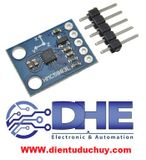
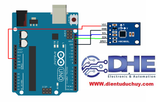









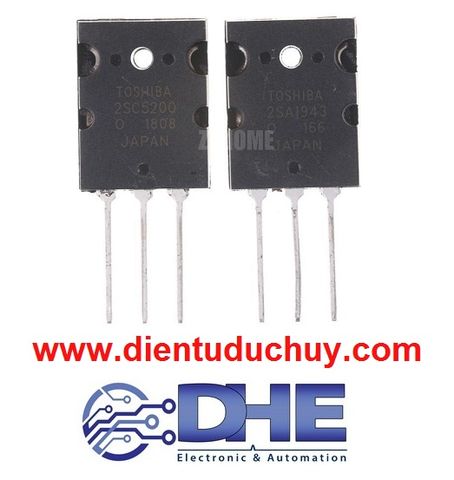









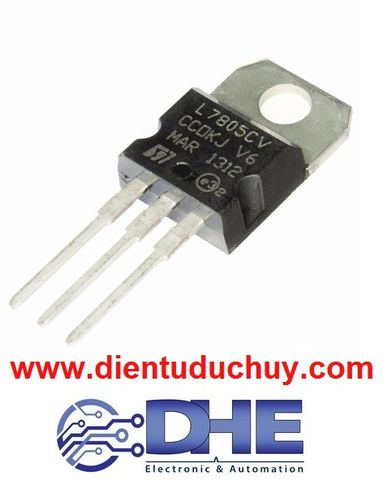



































Bình luận